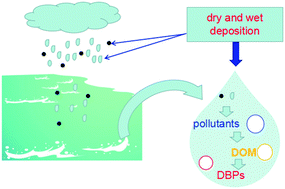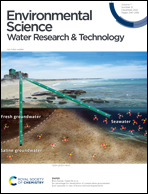Influence of atmospheric deposition on surface water quality and DBP formation potential as well as control technology of rainwater DBPs: a review
Abstract
Atmospheric substances can enter surface water through dry and wet deposition, which contributes to surface water pollution and is one indispensable cause of water eutrophication. Rainwater is a high-quality alternative drinking water source in water shortage areas. Rainwater disinfection is necessary to ensure its microbiological safety, but disinfection usually produces disinfection by-products (DBPs) and brings chemical risk to water. Dissolved organic matter (DOM) derived from the atmosphere may contribute to the formation of DBPs during water disinfection. In this study, the effects of wet and dry deposition on surface water quality and rainwater DBP formation as well as the control technologies of rainwater DBPs were comprehensively reviewed. Dry and wet deposition contributed compounds (sulphates, ammonium, alkali and ions), trace elements (Fe, Mn, Al, Cu, Zn, La, U, Th, Cd, As and Hg) and microplastics to surface water. The contribution of dry deposition to water pollution was enhanced in gale weather in areas with severe air pollution. The formation potential of CX3R-type DBPs (THMs, HAAs, HALs, HANs, HNMs and HAMs) was increased, because dry and wet deposition contributed DBP precursors. Low molecular weight DOM was more likely to generate DBPs, so it is suggested to develop effective technology targeting low molecular weight DOM removal from rainwater. Among conventional drinking water treatment processes, the combination of GAC and chloramination is very promising for controlling the comprehensive toxicity risk of DBPs in rainwater. Future studies should focus on the correlation between DBP formation in rainwater and atmospheric pollution, especially in severely polluted areas, and the key factors affecting rainwater quality and DBP formation.



 Please wait while we load your content...
Please wait while we load your content...